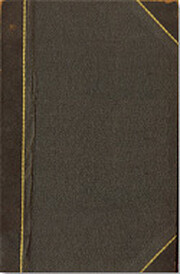

Cliquer sur une vignette pour aller sur Google Books.
|
Chargement... Growth of the Soil (original 1917; édition 1921)par Knut Hamsun
Information sur l'oeuvreL'Éveil de la glèbe par Knut Hamsun (1917)

Actuellement, il n'y a pas de discussions au sujet de ce livre.   ) )I really enjoyed part one of Growth of the Soil because with Isak, the main character of the novel, starting a farm in the middle of the Norwegian wilderness around the turn of the 20th century; this book is just as much about the growth of a man as it about the Growth of the Soil. Watching Isak and his farm grow to reach their full potential was an inspirational and enjoyable experience. Unfortunately part two of the book is a about the people who followed Isak into the valley and also set up farms. These people simply didn't have the character and determination of Isak. I'm guessing the author wanted to represent Norwegian society as whole because part two of the novel consisted mostly of reading about the petty squabbles between neighbors and the martial infidelities between husbands & wives. It's too bad men like Isak are the exception to the rule This is one of those romanticised notions of country life that can get to be insufferable at times. See, there's this guy who homesteads in the wilderness, he clears the land and builds a farm with only the strength of his own hand! Well, not counting the tools he needs, or the supplies he has to live on before the farm is ready because he doesn't have time to hunt, or the money that must be earned to buy all that. But other than that he's totally self-sufficient by damn! Oh, and he needs a woman around the place, but other than that! And this guy, he's above petty concerns like commerce and legislation and civic planning. He grows the soil, and as the book says, Growth of the soil was something different, a thing to be procured at any cost; the only source, the origin of all. Yeah, that'll show those wasters, the foolish idlers who lay about in heated rooms eating food they didn't grow themselves, and designing things like labor-saving farm machinery! It is, as they say, such a crock. The novel does not rise above this, either; every chapter, every page bludgeons the reader with the same simple moral lesson: tilling the soil good, everything else bad. The tale itself is fairly well-told, though (Ho!). The presence of characters with more complicated motives, such as Geissler, saves this from being a heavy-handed morality tale, making it more of a social commentary. And who can resist a book with such delicate characterization as this: She was utterly sick and tired of the farm and the wooden vessels, that took such a lot of cleaning; sick and tired, perhaps, of Axel and all, of the out-of-the-way life she led. But she never killed any of the cattle, and Axel never found her standing over him with uplifted knife in the middle of the night. Now, truly, what more could a man ask for in a wife? aucune critique | ajouter une critique
Appartient à la série éditorialeEst contenu dansPrix et récompensesListes notables
Classic Literature.
Fiction.
HTML: Knut Hamsun's novel The Growth of the Soil won the Norwegian writer a Nobel Prize in Literature in 1920. English translator W. W. Worster summed up the novel with these words: "It is the life story of a man in the wilds, the genesis and gradual development of a homestead, the unit of humanity, in the unfilled, uncleared tracts that still remain in the Norwegian Highlands." "It is an epic of earth; the history of a microcosm. Its dominant note is one of patient strength and simplicity; the mainstay of its working is the tacit, stern, yet loving alliance between Nature and the Man who faces her himself, trusting to himself and her for the physical means of life, and the spiritual contentment with life which she must grant if he be worthy." "Modern man faces Nature only by proxy, or as proxy, through others or for others, and the intimacy is lost. In the wilds the contact is direct and immediate; it is the foothold upon earth, the touch of the soil itself, that gives strength." "The story is epic in its magnitude, in its calm, steady progress and unhurrying rhythm, in its vast and intimate humanity. The author looks upon his characters with a great, all-tolerant sympathy, aloof yet kindly, as a god. A more objective work of fiction it would be hard to find--certainly in what used to be called 'the neurasthenic North.'" .Aucune description trouvée dans une bibliothèque |
Discussion en coursAucunCouvertures populaires
 Google Books — Chargement... Google Books — Chargement...GenresClassification décimale de Melvil (CDD)839.8236Literature German literature and literatures of related languages Other Germanic literatures Danish and Norwegian literatures Norwegian literature Norwegian Bokmål fiction 1800–1900Classification de la Bibliothèque du CongrèsÉvaluationMoyenne: (4.14) (4.14)
Est-ce vous ?Devenez un(e) auteur LibraryThing. |
||||||||||||||||||||||||||||||||||||||||||||||||||||||||||||||||||||||||||||||||||||||||||||||||||||||||||||||||||||||||||||||||||||||||